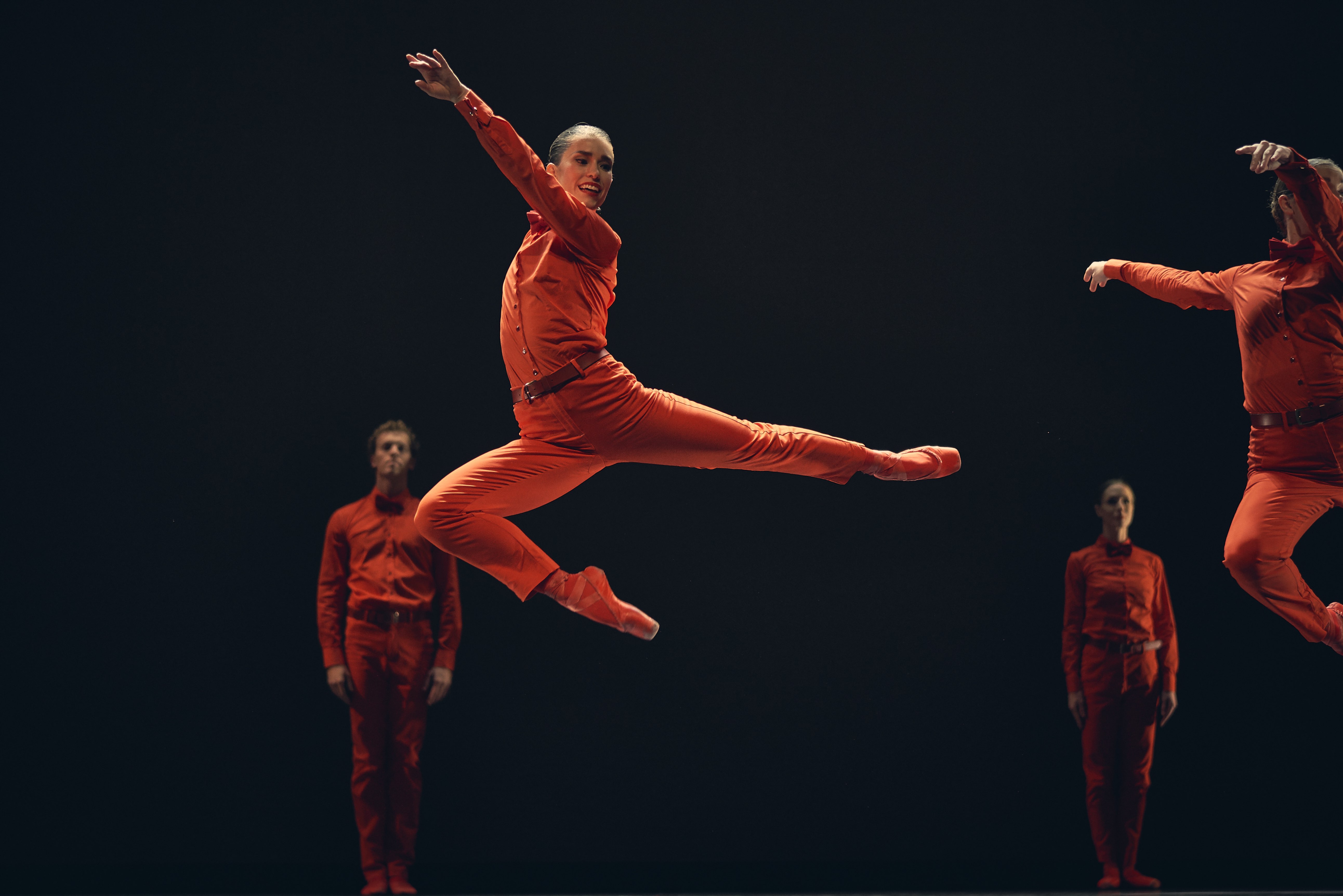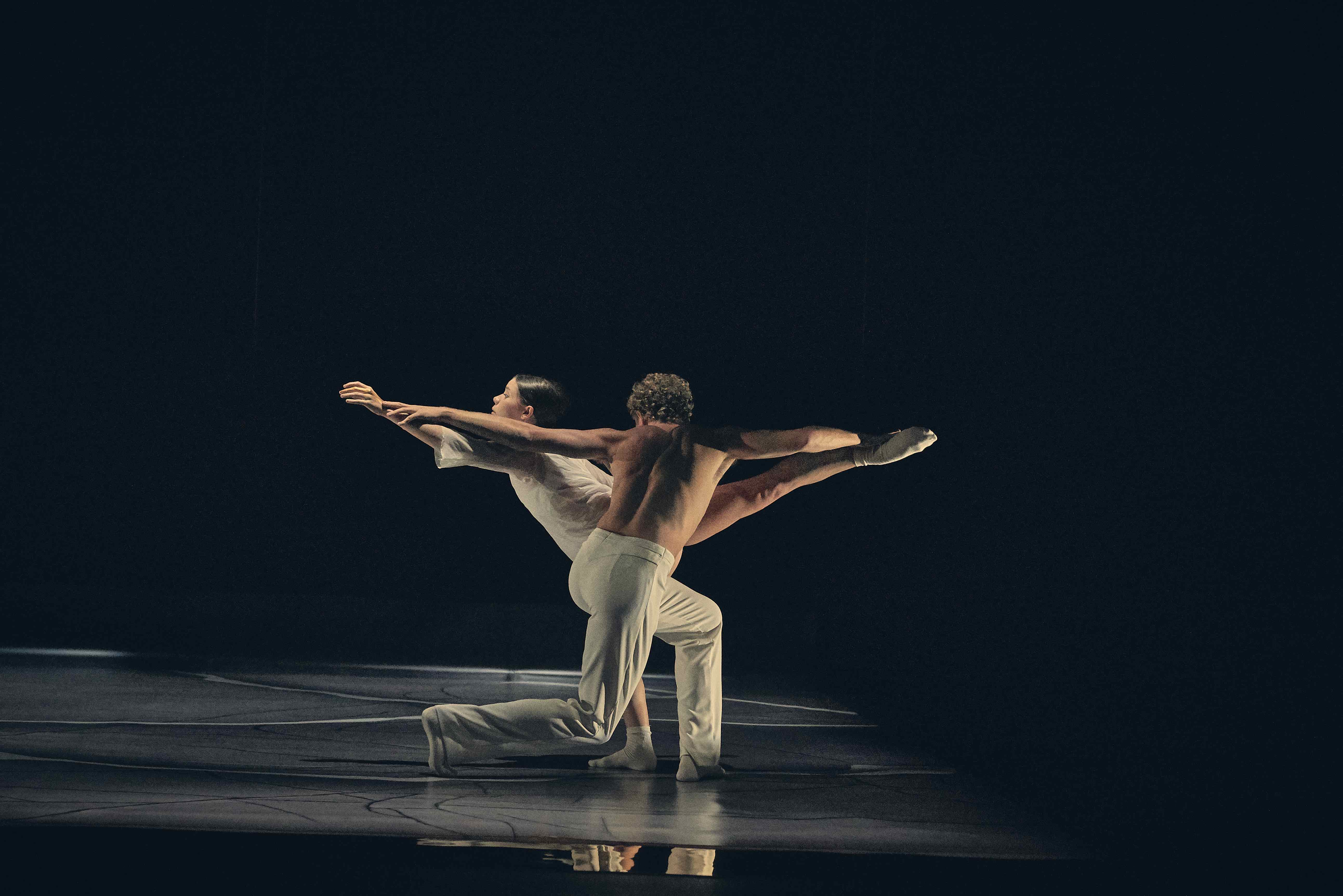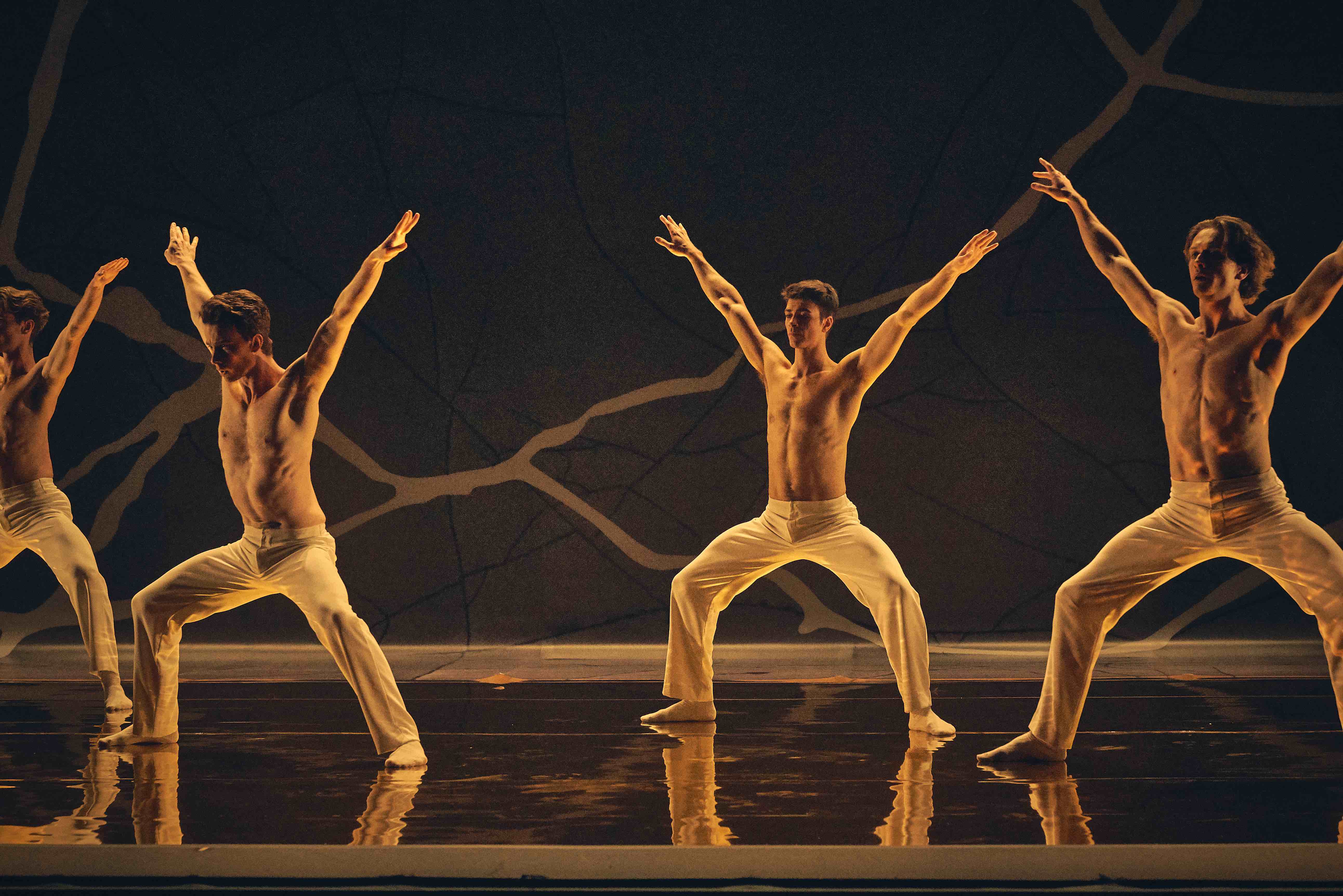The Australian Ballet is no stranger to America, having toured here regularly for half a century, but five years have elapsed since the last visit giving New Yorkers a welcome opportunity to catch up on some of the company’s newest work and some of its brightest stars. A world premiere (Tim Harbour’s smart and sassy Chairman Dances) and a work still under a year old (Alice Topp’s multifaceted Aurum) gave plenty of food for thought, while a chance to revisit a former Helpmann winner in the form of Stephen Baynes’ 2004 duet Unspoken Dialogues, was particularly welcome, especially when danced as powerfully as it was here by Kevin Jackson and Jill Ogai.
 Dana Stephensen in Chairman Dances. Photo © Justin Ridler
Dana Stephensen in Chairman Dances. Photo © Justin Ridler
The first half of the program erupted onto the stage of New York’s Joyce Theater with Chairman Dances, 11 dancers in a riot of colour and light illuminating a hitherto unexplored side of John Adams’ brilliant musical party piece. Harbour has also designed the costumes for his work, but while his formal suits in vibrant red echo the work’s Maoist origins — the concert piece derives from the composer’s opera Nixon in China – he is more interested in the work’s motor rhythms, minimalist structures, and its cheeky irreverence (the music is essentially one long foxtrot).
Harbour’s regimented mass of body shapes strike classic poses and indulge in mechanical patternings, just occasionally a trifle untidy around the edges. But while the men frequently adjust their bowties and strike poses of smug indolence, the women just as often shrug it all off with the choreographic equivalent of a raised eyebrow. All this nodding and winking is brilliantly illuminated by Jon Buswell’s effervescent red-on-red lighting design, breathtakingly contrasted in a snappy duet framed in midnight blue featuring a wonderfully insouciant Adam Bull and a decidedly unfazed Robyn Hendricks. His comedic attempt to dump her merely results in Hendricks slinking coolly to the front with a knowing look. The final pose, where she reclines majestically on a throne of subservient red bodies, ultimately resting her feet on Bull’s submissive back, is both priceless and perfectly timed.
If Harbour’s work is essentially humorous, Baynes’ Unspoken Dialogues is essentially deadly serious. Set to the cagey tones of Schnittke’s brittle, ambiguous First Violin Sonata, it’s a complex exploration of what makes a relationship work (or in this case not), and a substantial emotional journey that demands a pair of consummate actors to pull it off. Clad in Michael Pearce’s effective pastels, Jackson and Ogai make for a fascinating pairing, he: stern, short of fuse and taciturn; she: edgy, tender and conciliatory – or at least more so than he. It’s a work shot through with danger, and yet it’s never entirely he that causes the ructions, nor she that comes back for more.
 Coco Mathieson and Adam Bull in Aurum. Photo © Justin Ridler
Coco Mathieson and Adam Bull in Aurum. Photo © Justin Ridler
After an elegant, formal start, arms entwined, matters soon deteriorate into a series of push and pull misfires with a rough and tumble quality that brings out the athletic in both protagonists. With Jackson and Ogai, however, it’s never simple a case of extended limbs, drags and lifts. Each acts as much through the face as through the body, emotions conveyed with a look as much as with a gesture. It makes us feel like guilty observers and brings an extra dimension to an intimate story that is frequently painful to watch. The work lightens towards the end with a sexy shimmying sequence, but the conclusion is sufficiently dark to be troubling.
A full company work, Topp’s Aurum occupied the whole of the second half. Set to a patchwork of the better pieces of Ludovico Einaudi, it takes its inspiration from kintsugi, the Japanese art of repairing broken ceramics with golden lacquers, inviting us to contemplate a fracture rather than simply disguising it. In this way, a damaged object can actually be the richer for the visual impact of a little fixing up. Topp’s ivory costumes, the men shirtless, suggests the vulnerability of porcelain, enhanced by Jon Buswell’s warm-hearted lighting.
Topp is a coryphée with the company and this is her fourth TAB work as choreographer (I adored her daringly gymnastic Little Atlas in 2016, a breathtaking trio with some jaw-dropping aerial work). Here, the 12 dancers move seamlessly from one tender, graceful encounter to the next, the whole possessing the feel of a choreographic support group. A tender duet for Adam Bull and Coco Mathieson is all gentle lifts and mutual support, two men stretching achingly behind them, a bit like the glue holding their relationship together.
 TAB in Aurum. Photo © Justin Ridler
TAB in Aurum. Photo © Justin Ridler
The whole work shifted up a gear when a cracked-effect backcloth was raised and the dancers, their body shapes, sometimes echoing fractured ceramics, were bathed in golden light. From here on, Topp used shadowy figures in front and behind to suggest both the seen and unseen. Yet for all its pluses – and the work was very well danced indeed – there was something stop-start about it, while the concept seemed too oblique, too cerebral to cement these fragments of dance together. Without a program note, Topp’s inspiration would have remained an enigma, albeit an emotionally rich and skilfully executed one.
In a particularly snippy and blinkered review, the New York Times dismissed all three works as “humdrum”, singling out Unspoken Dialogues for particular abuse. Don’t believe a word of it – this was an engaging and varied program that was entertaining (Harbour), unsettling (Baynes) and thought-provoking (Topp). And for my money, Unspoken Dialogues was the evening’s standout.













Comments
Log in to join the conversation.